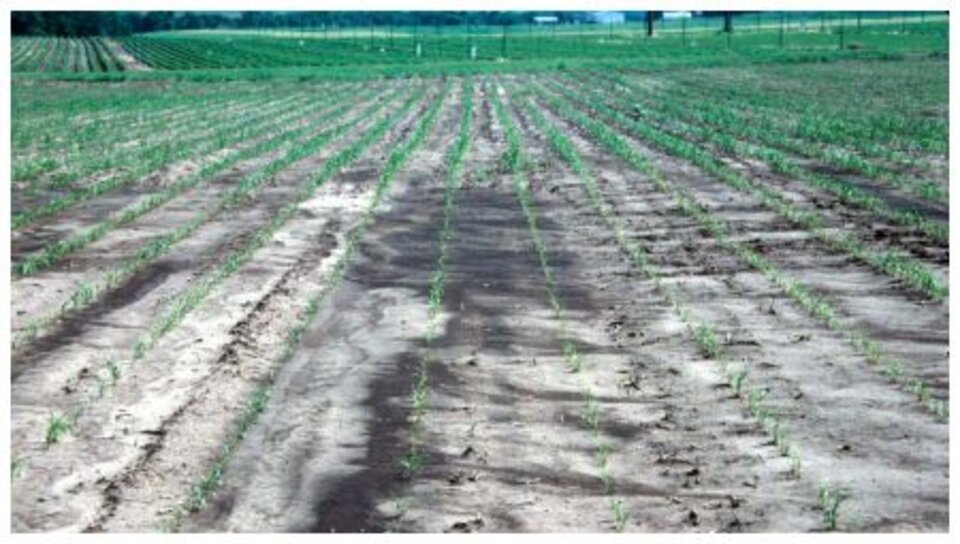Residue Management

The tilled plots in the foreground of this photo had considerable soil loss and runoff during intense spring rains. The tilled soil surface was susceptible to raindrop impact, causing erosion and surface crusting. The crop residue on the no-till plots in the background absorbed raindrop impact and allowed more water to infiltrate into the soil. With the improved soil structure, the crop is healthier in the no-till.
Crop residue absorbs raindrop impact and keeps the wind off the soil surface.
- This reduces soil particle detachment, reducing erosion from the forces of water and wind.
- By protecting the soil surface, surface crusting is also reduced, improving infiltration and decreasing runoff.
- This effect conserves soil and water and reduces risks to the environment.
- The residue mulch further conserves water by reducing evaporation from the soil surface.
- The decaying residue feeds soil microbes and earthworms, cycling the nutrients and building soil structure.
Crop residue must be properly managed year-round to provide the benefits without interfering with crop production.
Residue Management
- CropWatch (archived 2007): Harvest and residue management
- CropWatch (archived 2007): Considerations for the harvest of corn stover
- Iowa State University: Residue Management & Cultural Practices
- The Value of Residue by Mark Watson of Notill Org.
- USDA NRCS: Crop Residue Removal for Biomass Energy Production
Information presented within the soil & water management section of this Water Web site has been reviewed by University of Nebraska–Lincoln Cropping Systems Team members Richard Ferguson, Paul Jasa and Jim Schneider.